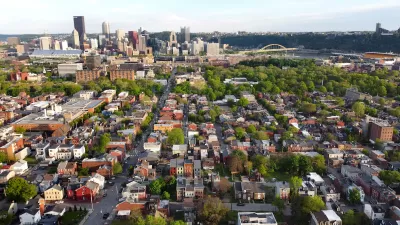Analysis of incremental tax revenues and public service costs of various development patterns in Madison, Wisconsin indicates significant economic savings from more compact land use. Modest increases in density can provide large fiscal benefits.
The city of Madison hired Smart Growth America to analyze potential development options in the city’s Pioneer District, a 1,400-acre, undeveloped area in the city. Their study evaluated five different scenarios for development: a "base" scenario that reflects the city’s current plan; a "Plus 50" scenario that assumes 50 percent higher density on certain parcels within the district; a "Compact" scenario that assumes the same development program as the base but on 500 fewer acres; a "Compact Plus 50" scenario that assumes the Plus 50 scenario on 500 fewer acres; and a "Low Density" scenario that assumes the same development as the base but on 1,000 more acres.
This study uses real world data to provide detailed information on how sprawl increases various government costs, including expenditures for the construction and maintenance of roadways as well as transportation to and from schools. The figure below shows that increasing density from under 5 to over 15 residents and employees per acre typically reduces road length (feet of road per resident and employee) by 50-80 percent.

Similarly, increasing density from under 50 to over 400 pupils per square mile typically reduces school transportation costs per student by 30-80 percent.

This research provides more evidence that smart growth is literally conservative: it conserves land and municipal costs.
FULL STORY: The Fiscal Implications: Madison, WI

Alabama: Trump Terminates Settlements for Black Communities Harmed By Raw Sewage
Trump deemed the landmark civil rights agreement “illegal DEI and environmental justice policy.”

Planetizen Federal Action Tracker
A weekly monitor of how Trump’s orders and actions are impacting planners and planning in America.

The 120 Year Old Tiny Home Villages That Sheltered San Francisco’s Earthquake Refugees
More than a century ago, San Francisco mobilized to house thousands of residents displaced by the 1906 earthquake. Could their strategy offer a model for the present?

In Both Crashes and Crime, Public Transportation is Far Safer than Driving
Contrary to popular assumptions, public transportation has far lower crash and crime rates than automobile travel. For safer communities, improve and encourage transit travel.

Report: Zoning Reforms Should Complement Nashville’s Ambitious Transit Plan
Without reform, restrictive zoning codes will limit the impact of the city’s planned transit expansion and could exclude some of the residents who depend on transit the most.

Judge Orders Release of Frozen IRA, IIJA Funding
The decision is a victory for environmental groups who charged that freezing funds for critical infrastructure and disaster response programs caused “real and irreparable harm” to communities.
Urban Design for Planners 1: Software Tools
This six-course series explores essential urban design concepts using open source software and equips planners with the tools they need to participate fully in the urban design process.
Planning for Universal Design
Learn the tools for implementing Universal Design in planning regulations.
Clanton & Associates, Inc.
Jessamine County Fiscal Court
Institute for Housing and Urban Development Studies (IHS)
City of Grandview
Harvard GSD Executive Education
Toledo-Lucas County Plan Commissions
Salt Lake City
NYU Wagner Graduate School of Public Service





























